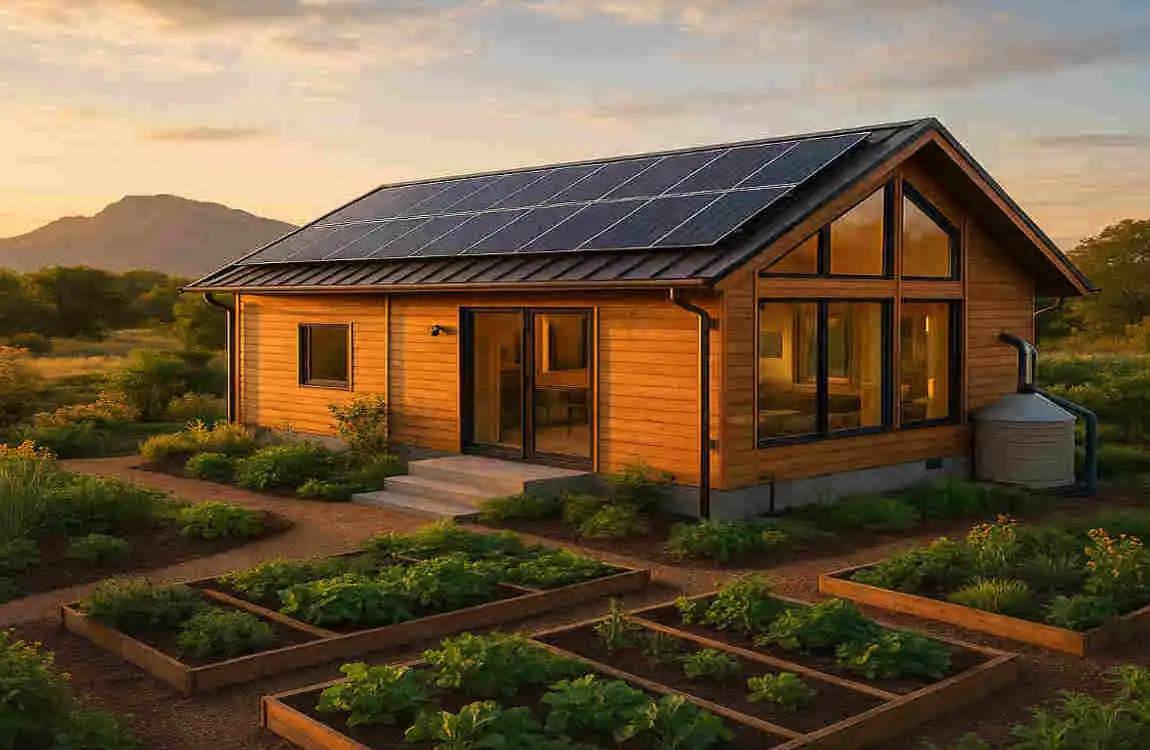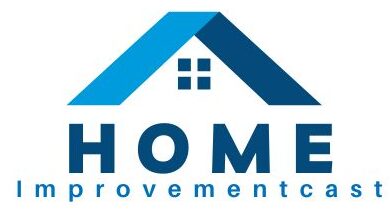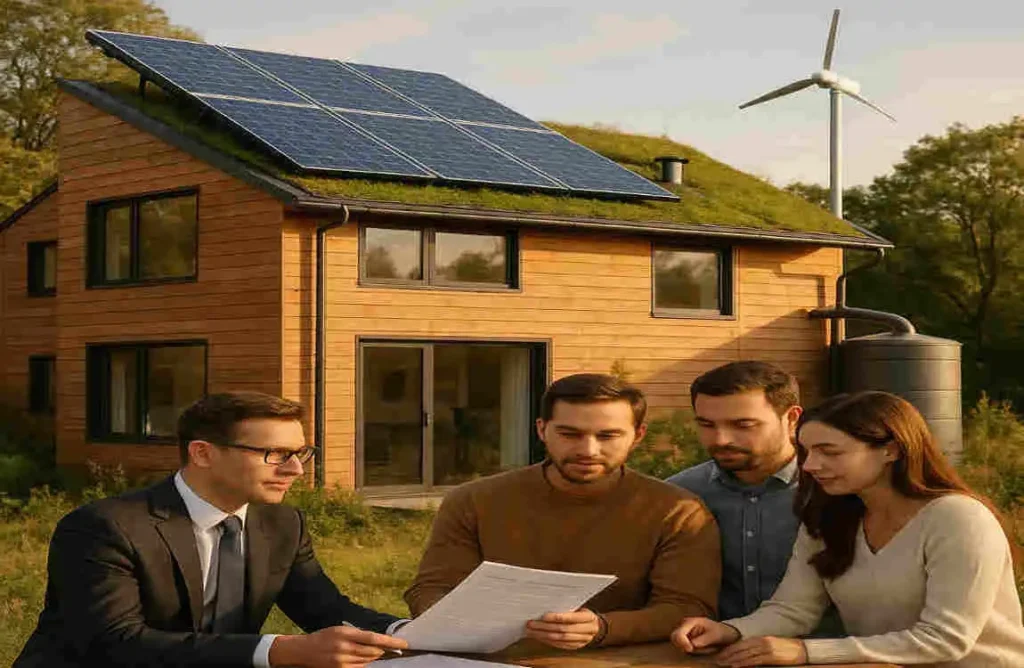Are you dreaming of living in an off-grid home, away from the hustle and bustle of urban life? The charm of self-sufficient living has captured the imagination of many, but one question often arises: can you get a loan for an off-grid house? The short answer is yes, but the process can be more challenging than securing financing for a traditional property.
What Is an Off-Grid Home?

Before we discuss financing, it’s crucial to understand what an off-grid home is and why these properties can be more challenging to finance.
Defining an Off-Grid Home
An off-grid home isn’t connected to public utilities like electricity, water, and sewage systems. Instead, these homes rely on alternative solutions such as:
- Solar or wind power for electricity.
- Wells, rainwater harvesting, or cisterns for water supply.
- Septic systems or composting toilets for waste disposal.
Off-grid homes vary widely in size and style, from rustic cabins to modern, sustainable builds. Some popular types include:
Type of Off-Grid HomeKey Features
Cabins are Small, remote, and simple.
Earthships are Eco-friendly and made of natural/recycled materials.
Tiny Homes Minimalist and portable.
Rural Properties Larger properties in isolated areas.
Why Are Off-Grid Homes Considered Risky?
While off-grid living is appealing to many, traditional lenders often consider these properties risky investments. The reasons include:
- Infrastructure challenges: Systems such as solar panels and septic tanks differ from standard setups, making appraisals and resale values difficult to determine accurately.
- Location issues: Many off-grid homes are situated in rural or remote areas, which complicates access and maintenance.
- Uncertainty: Banks worry about the long-term viability and marketability of non-traditional properties.
Can You Get a Loan for an Off-Grid House?
Let’s address the big question directly: can you get a loan for an off-grid house?
You may also read (how to conceal electrical wires outside your home).
The Short Answer: Yes, But It’s Challenging
You can secure a loan for an off-grid property, but it’s more difficult than financing a standard home. Traditional banks and lenders often hesitate to approve loans for off-grid homes due to their unique features and the perceived risks associated with them. However, specialized lenders, government-backed options, and creative financing solutions can make it possible.
Here’s a breakdown of why traditional lenders are cautious:
- Resale uncertainty: Off-grid homes may not appeal to a broad market, making them harder to resell.
- Appraisal difficulties: Unique features like solar arrays or composting toilets don’t have comparable properties (comps) for accurate valuation.
- Loan defaults: Lenders worry about the financial stability of buyers opting for unconventional living arrangements.
Why Financing an Off-Grid Home Is Challenging

Understanding the specific hurdles you might face can help you prepare for the loan application process.
Major Challenges
- Reluctance from Major Banks: Major banks, such as Chase, Wells Fargo, or Bank of America, often reject off-grid home loan applications. They prefer properties connected to public utilities, which are easier to appraise and insure.
- Post-2008 Mortgage Rules. The 2008 financial crisis led to stricter lending regulations, including requirements for homes to meet basic infrastructure standards, such as access to water and electricity.
- Appraisal Issues: Off-grid homes often lack comparable sales, which are crucial for determining property value. Without “comps,” lenders hesitate to approve loans.
- Perceived Risk Off-grid living involves non-traditional systems and infrastructure. Lenders view this as a higher risk, especially if the home doesn’t comply with local building codes.
What Lenders Look for in Off-Grid Home Loans
To improve your chances of financing, it’s essential to understand what lenders evaluate when considering a loan for an off-grid property.
Key Factors Lenders Assess
- Location and Accessibility
- The home should be accessible year-round, with reliable road access.
- Remote properties with private or seasonal roads may be subject to additional scrutiny.
- Foundation
- A permanent foundation is typically required for loans. Mobile or tiny homes without foundations may not qualify for traditional mortgages.
- Sanitation and Waste Disposal
- Homes must have safe and sanitary waste disposal systems, such as a septic tank or an approved composting toilet.
- Water Supply
- Access to water is critical, whether through a well, rainwater harvesting, or cistern.
- Energy Systems
- Solar panels, wind turbines, and generators must be functional and reliable.
- Building Code Compliance
- The property must meet local building codes and be properly permitted.
Types of Loans Available for Off-Grid Homes
You’ll need to think beyond traditional mortgages when financing an off-grid home. Here are the most common loan options:
Local Banks and Credit Unions
- Local institutions often have more flexible lending criteria and are willing to evaluate off-grid properties on a case-by-case basis.
Mortgage Brokers Specializing in Off-Grid Properties
- These professionals understand the unique challenges of off-grid homes and can connect you with willing lenders.
Government-Backed Loans
- FHA Loans: Available if the home meets health and safety standards.
- USDA Loans: Designed for rural properties, with specific criteria for eligibility.
- VA Loans: May cover off-grid homes if they meet Minimum Property Requirements (MPRs).
Construction Loans
You may also read (essential materials to build your dream home).
- Ideal for building a new off-grid home from scratch. These loans fund the construction process and convert into a mortgage once the house is complete.
Owner Financing
- In this arrangement, the seller acts as the lender, allowing you to bypass traditional banks.
Personal Loans or Lines of Credit
- These are alternatives for smaller amounts, but they often come with higher interest rates.
Typical Loan Terms and Requirements for Off-Grid Homes
Here’s what to expect when pursuing financing for an off-grid property:
Requirement Details
Down Payment of 20–35% of the property value.
Interest Rate Penalties Typically 1% higher than standard mortgage rates.
Loan Term Shorter terms (10–15 years) are common.
Documentation of Detailed plans of the property’s systems.
Steps to Secure a Loan for Your Off-Grid House
Research and Preparation
- Assess your financial health and credit score.
- Gather necessary documents, including proof of income, property details, and compliance certifications.
Choose the Right Lender
- Look for local banks, credit unions, or mortgage brokers experienced with off-grid homes.
Strengthen Your Loan Application
- Provide detailed descriptions of the property’s systems (solar, septic, etc.).
- Offer proof of compliance with local regulations.
- Include quotes for any necessary upgrades.
Negotiate Loan Terms
- Be prepared for higher down payments or interest rates.
- Discuss incorporating system upgrades into the loan.
Finalize the Loan
- Complete all paperwork, schedule inspections, and prepare for contingencies.
Overcoming Common Obstacles
Typical Challenges
- Lack of comparable sales for appraisals.
- Properties on private or seasonal roads.
- Homes without permanent foundations.
- Non-compliant or unpermitted systems.
Solutions
- Work with local professionals and specialized lenders.
- Provide detailed documentation and plans.
- Consider alternative financing options if traditional loans aren’t available.
Real-Life Success Stories
Many buyers have successfully secured loans for off-grid homes by working with the right lenders and preparing thoroughly. For example:
- A family in Colorado used a USDA loan to finance a rural off-grid property.
- A couple in Oregon combined a construction loan and personal savings to build their dream Earthship.
You may also read (transform your space with home improvement cast).

